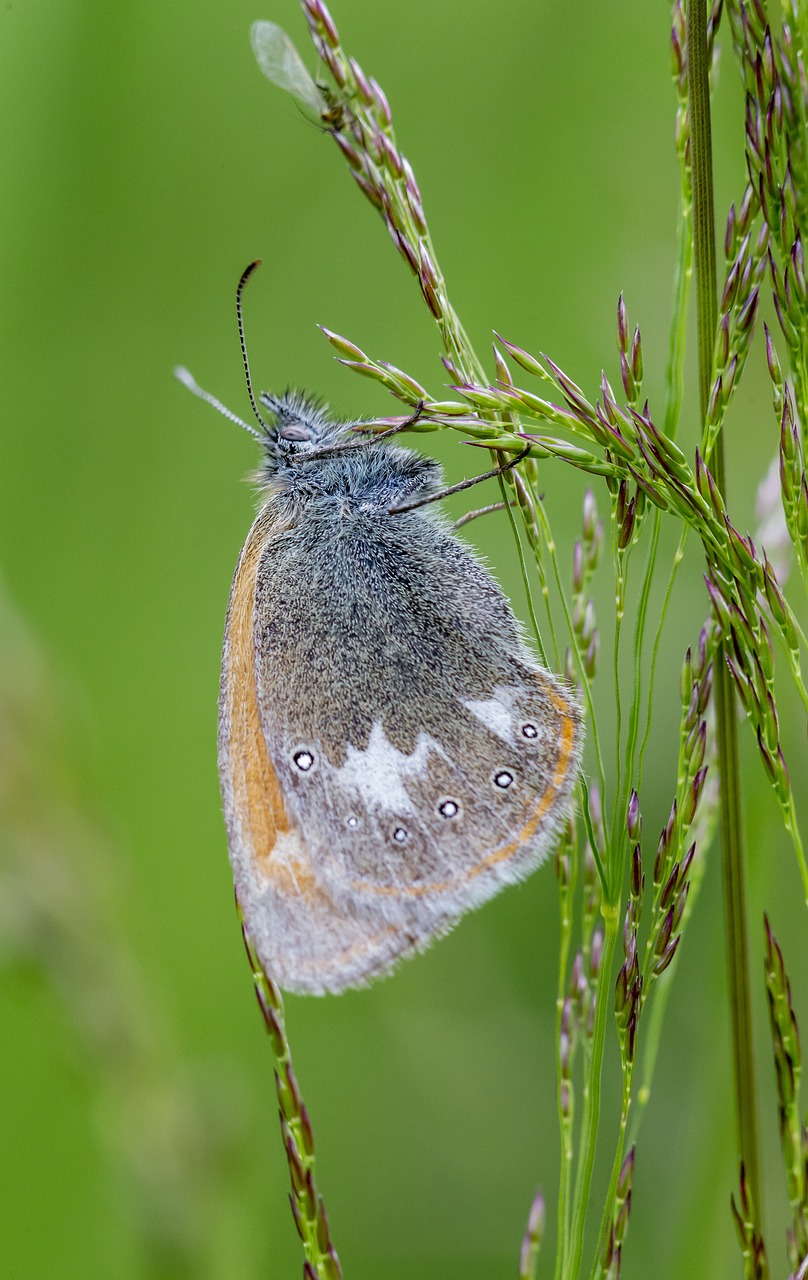The Chestnut Heath (Coenonympha glycerion) is a species of butterfly belonging to the family Nymphalidae and the subfamily Satyrinae. Here’s a detailed description:
- Appearance: The Chestnut Heath is a small to medium-sized butterfly with a wingspan ranging from 30 to 38 millimeters. It has wings that are typically chestnut brown in color, with darker markings and a series of small eyespots along the edges of the hindwings. The underside of the wings is usually paler with subtle markings, and the eyespots may be more prominent. Males and females look similar, although females may have slightly larger and more rounded wings.
- Habitat: Chestnut Heaths are commonly found in open habitats such as grasslands, meadows, heathlands, and woodland edges. They have a preference for areas with short vegetation and patches of bare ground, where they can bask in the sun and find suitable nectar sources.
- Range: This butterfly species is native to various parts of Europe, including the British Isles, Scandinavia, Central Europe, and extending into parts of Asia. It is widespread within its range and can be found in suitable habitats across different countries.
- Behavior: Chestnut Heaths are diurnal and can often be seen flying close to the ground, darting among the vegetation or perching on low plants. They have a rapid and erratic flight pattern, making them challenging to follow. Adults feed primarily on flower nectar, using their proboscis to reach deep into the floral tubes.
- Life Cycle: The Chestnut Heath undergoes a complete metamorphosis, progressing through egg, larva (caterpillar), pupa (chrysalis), and adult stages. The caterpillars feed on various grass species, while the adults primarily feed on flower nectar.
- Conservation: While the Chestnut Heath is not considered globally threatened, it may face localized threats due to habitat loss, habitat fragmentation, and changes in land use. Conservation efforts aimed at preserving and restoring grasslands, meadows, and heathlands, as well as maintaining suitable larval host plants, can benefit not only the Chestnut Heath but also other butterfly species.
The Chestnut Heath is appreciated by enthusiasts and researchers for its beauty, behavior, and ecological importance as a pollinator. Understanding its habitat requirements and conservation needs is crucial for ensuring its long-term survival.
Visited 909 times, 3 visit(s) today
Views: 1471
Subscribe to the newsletter:
